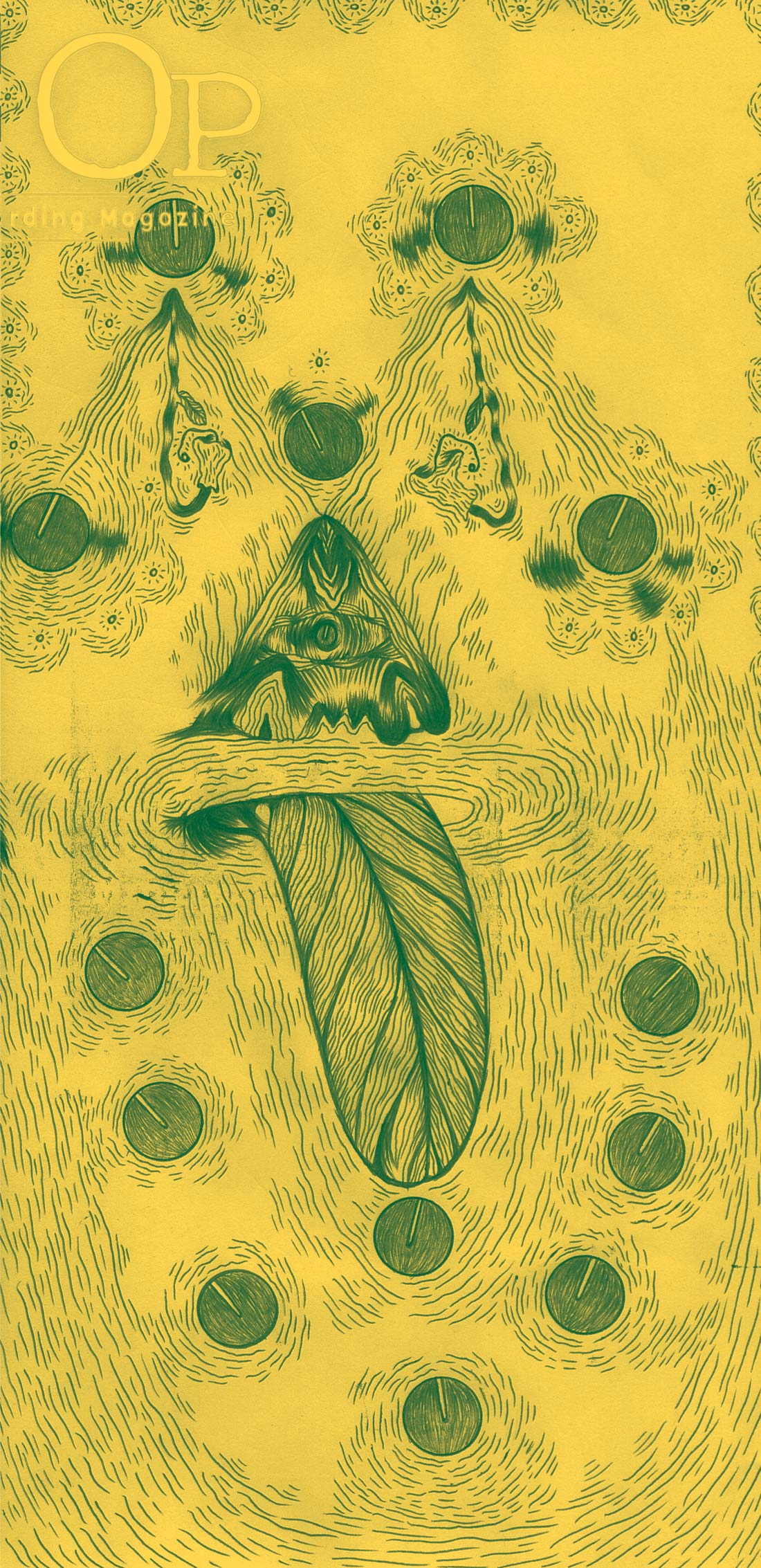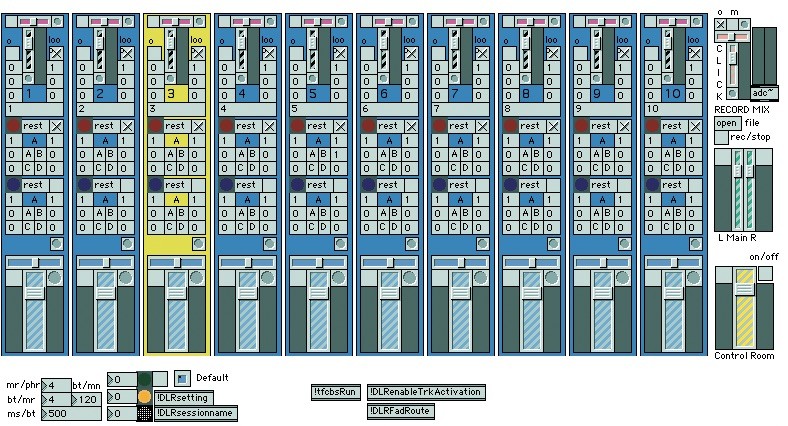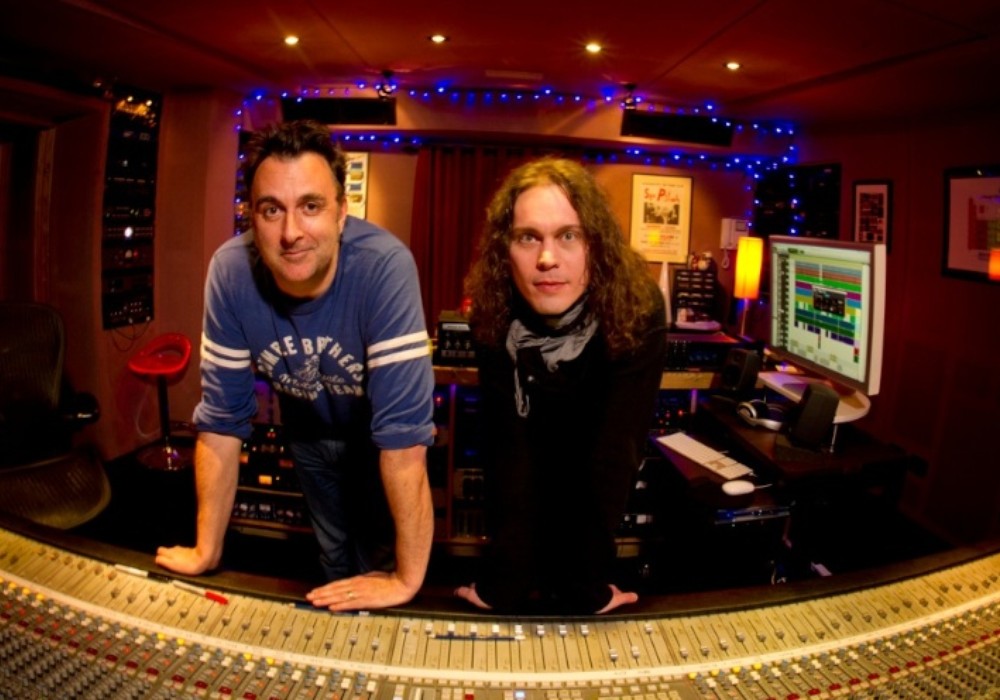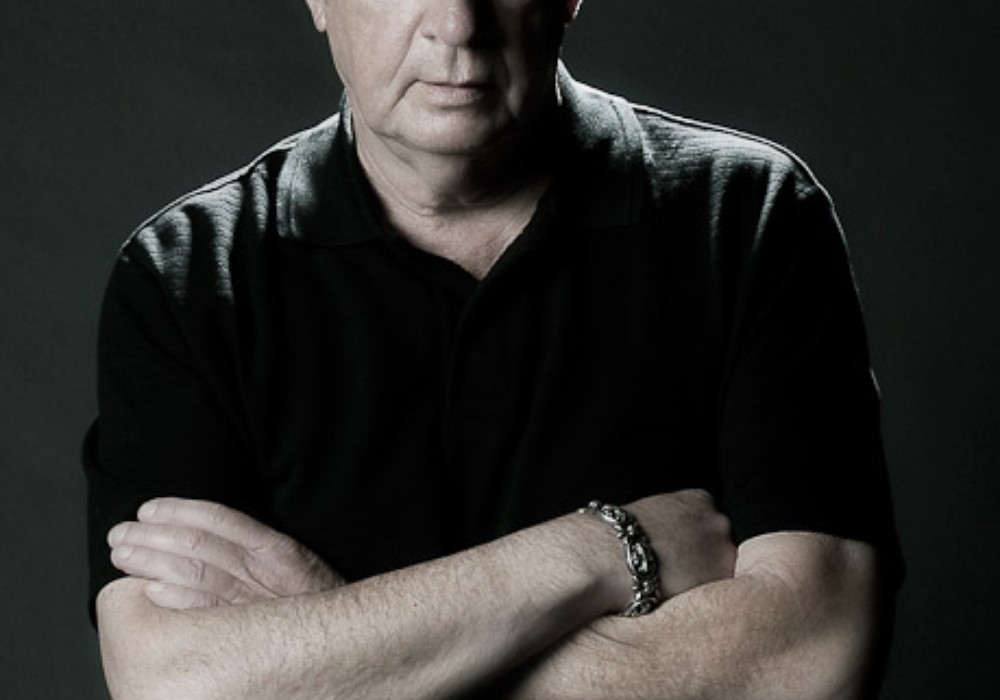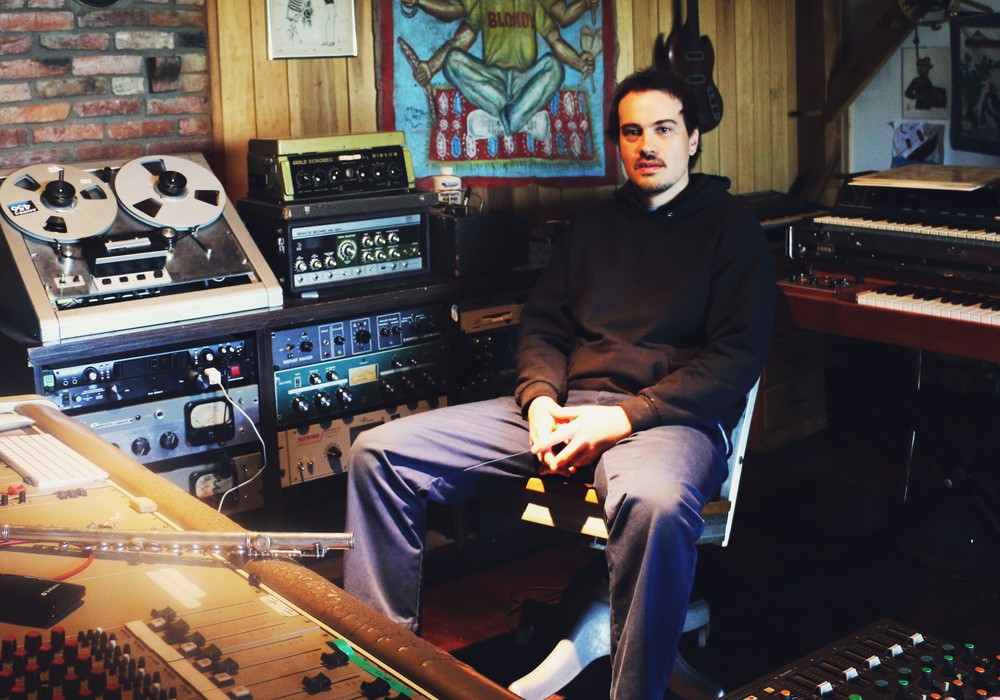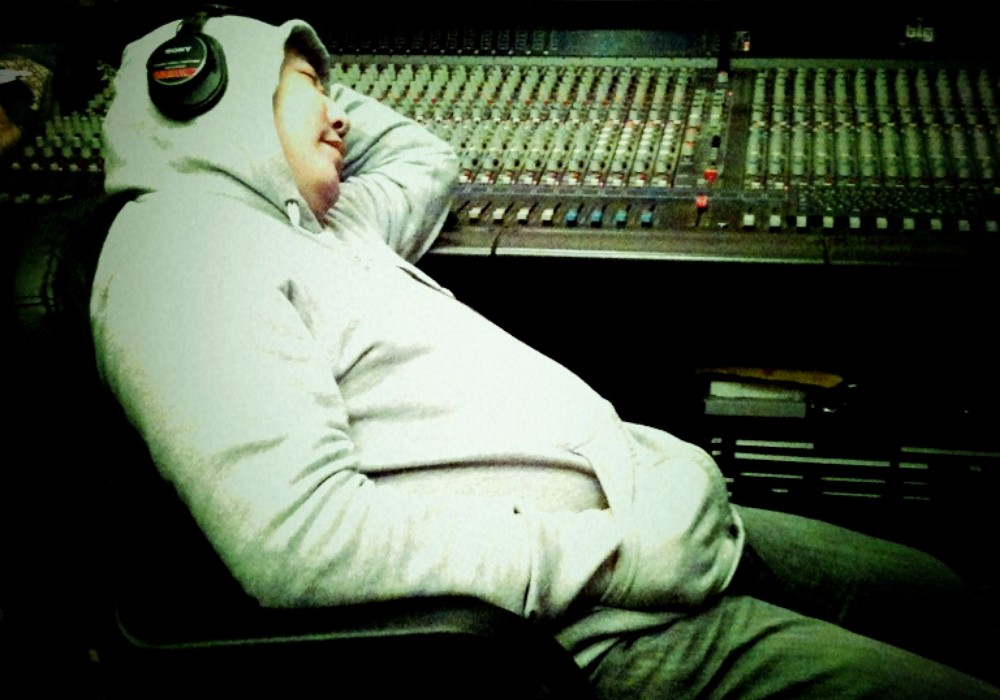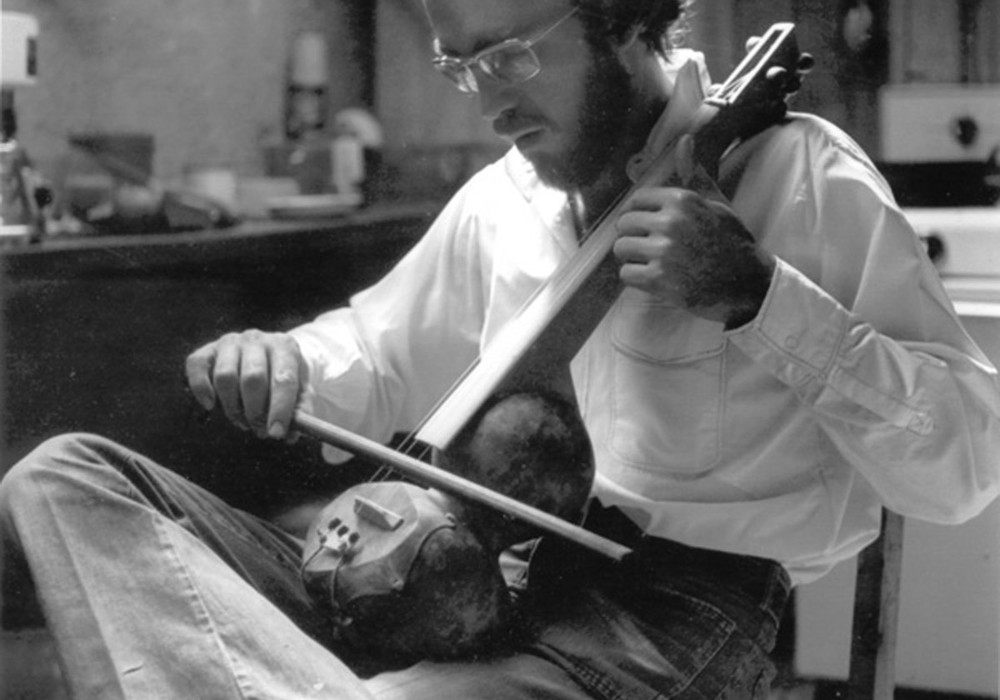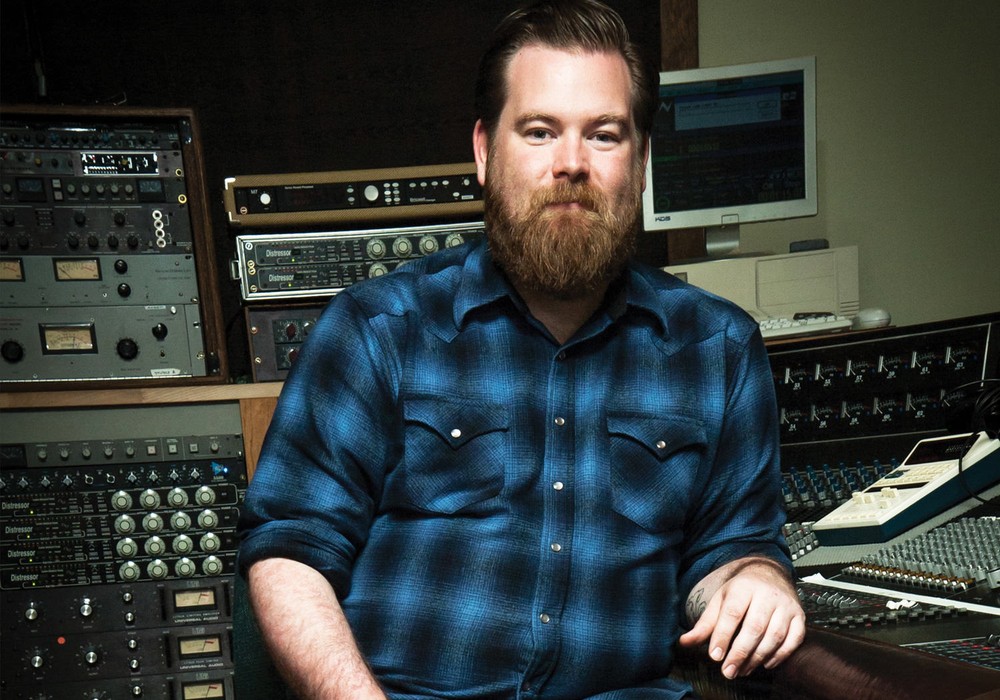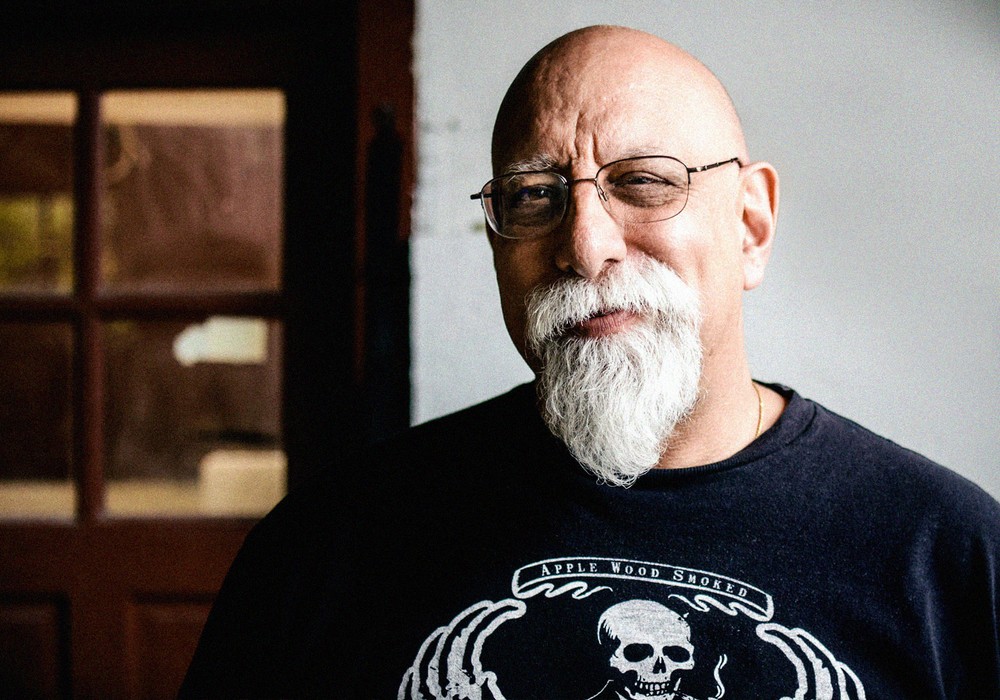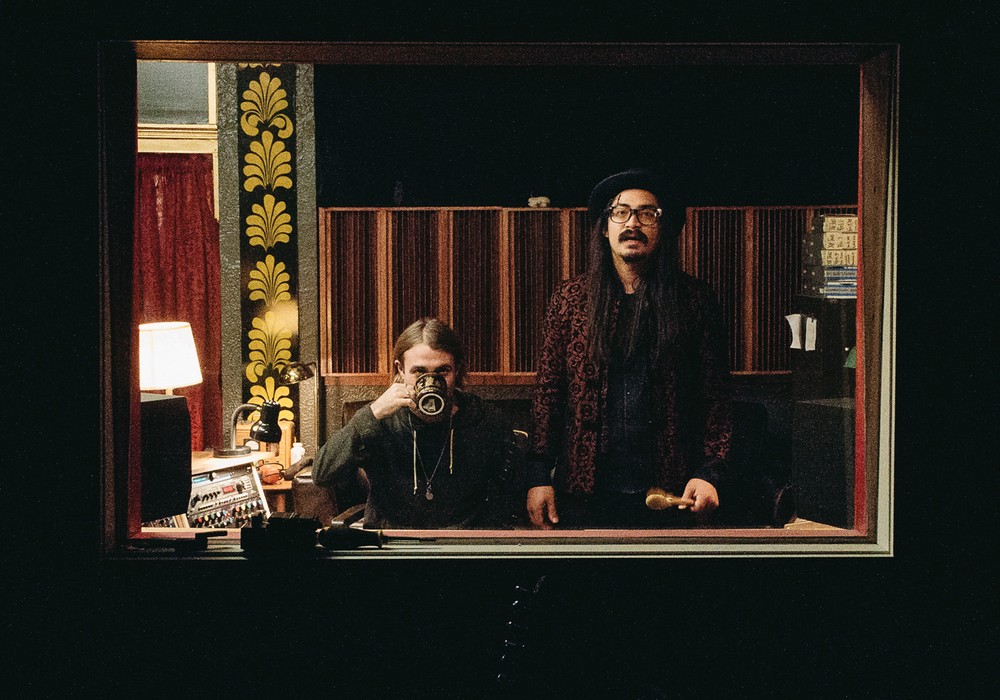I met Menomena (rhymes with 'phenomena') at their rehearsal and recording space called The Hot Water Bottle, a beautiful setting on top of a hill at the edge of Oregon wine country. Their album, I am the Fun Blame Monster (an anagram of "The first Menomena album") is a tremendous recording. Besides the excellent songwriting and musicianship, I was struck immediately by the album's interesting production style. It sounds equally organic and electronic. The band uses conventional instruments — piano, electric guitar, electric bass, drums, organ, etcetera — and you can tell that they are really playing the instruments, but it sounds sampled and looped somehow. In my research for this article, I found that they had written their own software, and that they had recorded the album themselves. I had to know more. So, after two interviews and three photo shoots, may I present to you: Menomena. The band consists of Justin Harris on bass and baritone saw, Brent Knopf on piano, organ and guitar, and Danny Selm on drums. They all share vocal duties.
So how did the band start?
Justin Harris: Danny and I played in a band, starting our senior year in high school, for five years. Brent saw one of our shows, introduced himself to Danny; they had a torrid love affair. That band broke up, not as a result of the torrid love affair. Brent was away at college during the time that we were still together, and then once our band disbanded, Brent graduated from college that same spring, and then when he moved back in October, we got together. That was in the fall of 2000.
Brent, were you in other bands while you were in college?
Brent Knopf: No, Menomena is my first band.
J: What about Shamrock?
B: I had this one show called Shamrock — 'cause it was a sham — and it basically consisted of me playing guitar and singing, and people saying I sounded like Alphaville.
And it rocked.
B: There was this drummer I was playing with. He didn't care about the music, and we were getting paid by how long we played. So it was about forty-five minutes into it, and we were kind of finishing up, and he was like, "Let me just solo for a while," and he went off into a ten-minute drum solo. [all laugh] So that was my previous band experience.
You don't have many rules, but now one of them is, "No drum solos!"
J: That's the funny thing. When he [Brent] got together with us, he was always like, "Oh, Danny, you should do a drum solo right here."
Danny Seim: Which is good because I can't. We never have that problem.
J: He thought drum solos were what bands do. It was kinda cute, and endearing.
B: The prequel to us three working together in any capacity was this total alterna-rock song that I wrote, and Danny put down the drums, and Justin put down a bass line for it. And that was way back in... '98? '97?
J: Yeah. We should have realized then that this would never work. [laughs]
B: I realized that then. I was just using you guys. [more laughs]
THE REEL DEEL
IATFBM was recorded using Deeler (DLR — Digital Looping Recorder), a software program that Brent developed originally as a live tool, but they soon found that it lent itself more to their songwriting and recording process. After I had asked a few questions about Deeler and how they use it, they voluntarily gave me a demonstration, which was very helpful. I was amazed not only by how fast everyone was able to get something recorded into the computer, but how easy it was. Once the software was up and running, it was a matter of simply plugging a mic — or an instrument cable, if they wanted to record direct — into the Mbox, then moving the mic around the room. Each of them was very comfortable with the process, and it's also a very simple, intuitive, and effective way of recording.
The software, which was created using Max/MSP (www.cycling74.com), is basically a multi-track phrase or loop sampler. It uses either the Mac's built- in audio jacks or an external card or interface box. There are ten mono tracks, each of which can play or record four phrases. So when one of the band members feels particularly inspired, he will plug in and start by playing his instrument along with the click track. It's always improvised. That person will play four variations (A, B, C and D) of a phrase, in groups of four measures, although the software can be set for a different number of measures. Then another person will go back and overdub four variations of another part, based on the previous person's work. So each track will record four loops, which the band will choose from later. As you can see, this creates many separate but intertwining loops, with the opportunity for many variations. This is how they create most, but not all, of their songs.
After they've all had a chance to go through what they've recorded, each...
